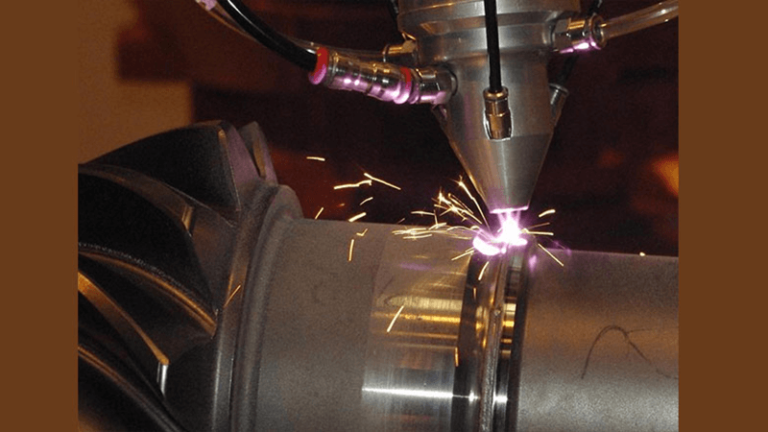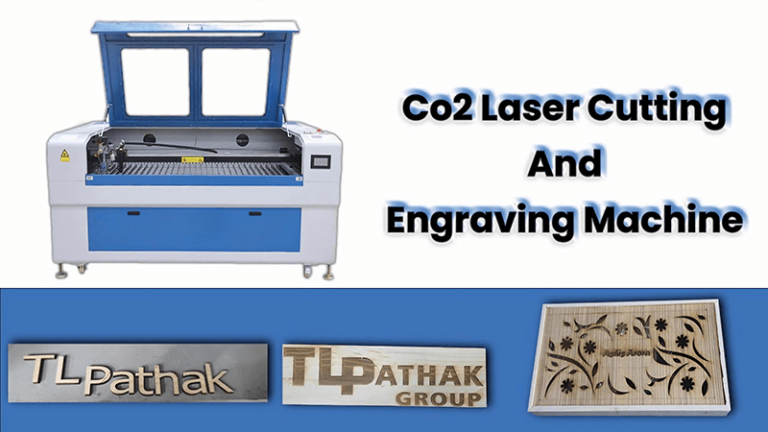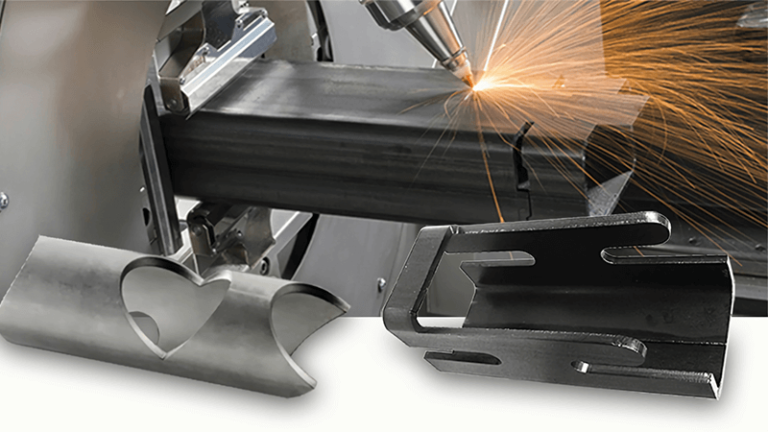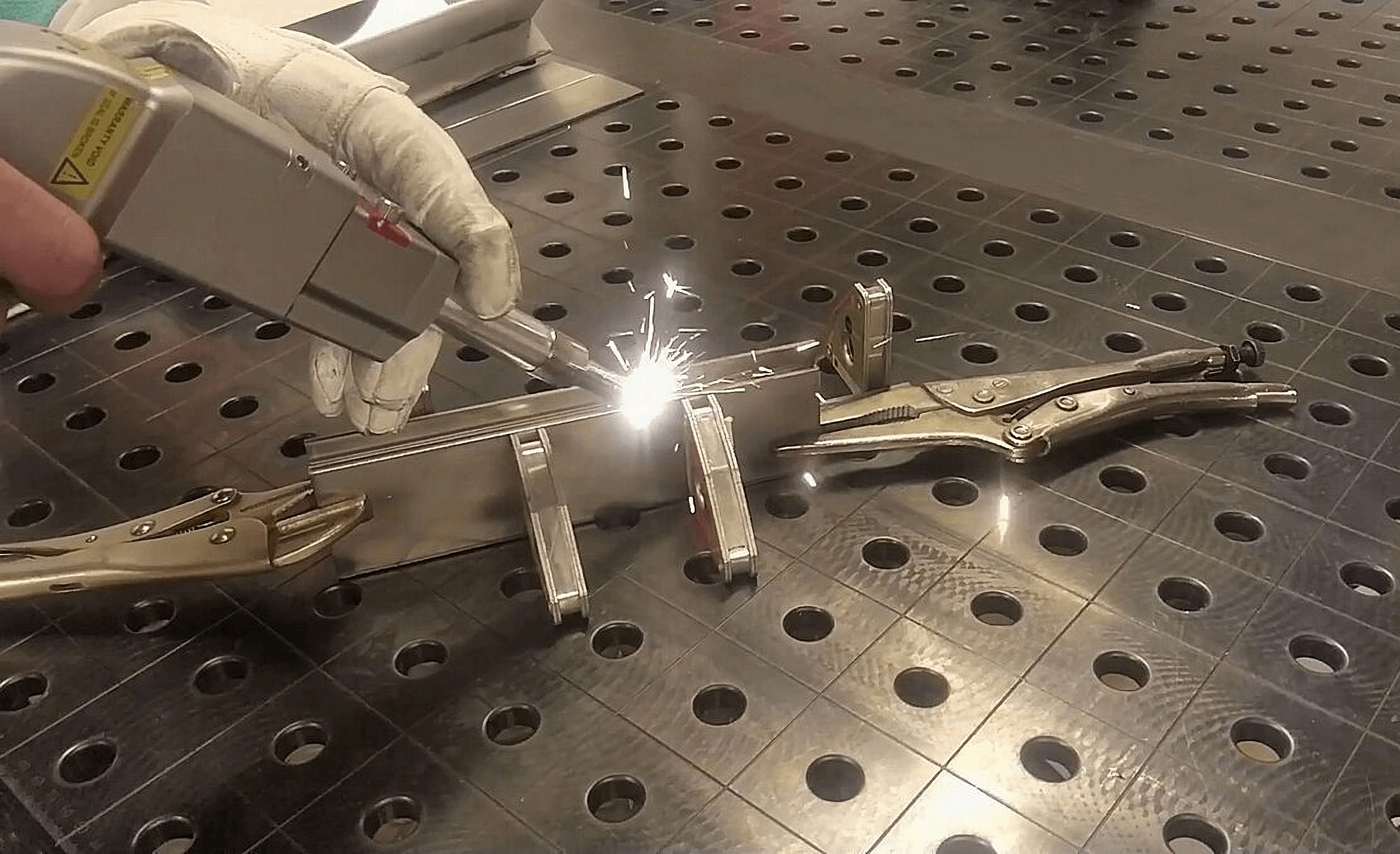
Introduction: Why You Need High-Precision Fiber Welders?
Welding can be a tricky business, especially when you need precision. Regular welding methods often fall short when the task demands extreme accuracy. That's where fiber welders step in. If you're dealing with small parts, intricate designs, or thin materials, fiber welders are the unsung heroes of the industry.
From a seller's perspective, high-precision fiber welders represent a strategic investment that enhances product quality, increases efficiency, reduces costs, and expands capabilities. By adopting this technology, businesses can not only improve their operational performance but also strengthen their market position and attract new customers in an increasingly competitive landscape.
In this post, I'll explain why fiber welders are critical for high-precision tasks, how to choose the best one, and give you a quick rundown of top models that promise outstanding results.
Why Fiber Welders are Essential for High-Precision Welding
Fiber welders are different from traditional welding machines in several key ways. First, they use a high-powered laser to melt and fuse materials, providing a much more focused and controlled energy beam than other welding methods. This means less heat distortion, higher precision, and better overall results.
If you want your welding job to have clean, strong, and precise joints without excessive heat damage, a fiber laser welder is your best bet. The precision comes from the fiber optic technology, which ensures that the beam is consistent and narrow, even on very fine details. For industries like aerospace, medical device manufacturing, and electronics, these welders are invaluable.
Fiber welders are perfect for jobs that require precision and high accuracy.True
Fiber welders provide a controlled energy beam, reducing heat distortion and offering higher precision for intricate designs and small parts.
Fiber welders are primarily used for heavy-duty welding jobs.False
Fiber welders are specifically designed for high-precision tasks, especially on smaller or delicate materials, not heavy-duty applications.
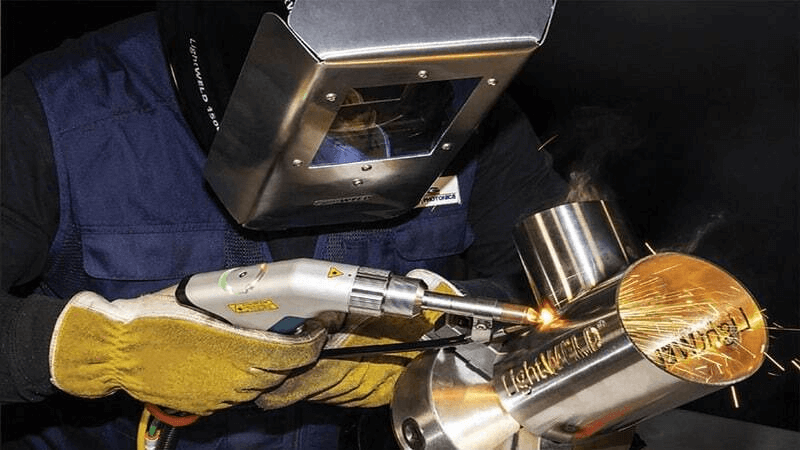
What Makes a Fiber Welder "Top" for Precision Welding?
Not all fiber welders are created equal, so it’s essential to know what makes the best ones stand out. The top fiber welders typically have the following key features:
Power Control
The ability to precisely control the laser power is fundamental to achieving high-quality welds in precision applications. Power control allows the welder to adjust the energy output depending on the material and thickness being welded. This flexibility is crucial for minimizing defects and controlling the heat-affected zone (HAZ), which is vital in preserving the integrity of the surrounding material. A well-calibrated fiber laser can reduce distortion, maintain consistent weld penetration, and enhance the overall quality of the finished product.
Speed and Efficiency
Fiber welders are known for their speed and efficiency compared to traditional welding methods. With the ability to complete welds faster without compromising quality, fiber lasers provide significant productivity gains. Their high-speed operation also reduces energy consumption and wear on equipment, making them a cost-effective solution for long-term use. Fiber lasers maintain exceptional precision even at rapid welding speeds, enabling businesses to achieve both high throughput and high-quality results, reducing operational costs significantly.
Spot Size Control
Spot size control is critical to achieving high-precision welds, especially in applications requiring fine detailing, such as in electronics or medical devices. A smaller spot size focuses the laser beam's energy onto a very precise area, increasing energy density and allowing for greater control over the welding process. This precise focus helps melt and fuse materials rapidly, while minimizing thermal distortion. For thicker materials, larger spot sizes are used to facilitate faster heat transfer and more efficient welding, providing flexibility for various types of workpieces.
Cooling Mechanism
To ensure consistent performance during prolonged operations, fiber welders are typically equipped with advanced cooling systems, such as water-cooled components. These cooling mechanisms help to prevent overheating, keeping the laser source at optimal temperatures and ensuring the machine's reliability and longevity. Proper cooling is essential for maintaining stable performance over extended sessions, reducing the likelihood of overheating, and preventing thermal damage to the materials being welded. Moreover, effective cooling leads to more uniform welds and minimizes defects, ensuring high-quality outcomes.
Beam Quality and Focusability
The beam quality of a fiber laser plays a significant role in its precision. High beam quality allows for a smaller, more focused spot size and sharper laser precision, which is critical in applications where fine details are important. Fiber lasers provide consistent beam quality, leading to stable and reliable welding outcomes. Additionally, their focusability allows operators to fine-tune the focal point, improving control over the weld and enabling accurate execution of complex designs.
Flexibility in Materials and Thicknesses
A top fiber welder offers excellent versatility in terms of materials and thicknesses. It can weld a wide range of metals, including steel, aluminum, copper, and titanium, with various thicknesses. The ability to easily switch between different materials while maintaining high precision is crucial for industries such as aerospace, automotive, and electronics, where different metals are commonly used in production.
Minimal Heat-Affected Zone (HAZ)
In precision welding, minimizing the heat-affected zone (HAZ) is critical. Fiber lasers, with their precise power control and focused beam, produce minimal heat input into the surrounding material. This results in a smaller HAZ, which reduces the risk of material deformation, oxidation, or discoloration. By controlling the thermal impact, fiber welders preserve the structural and aesthetic integrity of the workpiece.
With these features, fiber welders can handle even the most delicate welding tasks with ease, making them an essential tool for high-precision jobs.
Top fiber welders have adjustable spot sizes to cater to different welding needs.True
Adjustable spot sizes help tailor the welding process for both fine details and thicker materials, ensuring precision and flexibility.
Fiber welders cannot weld metals like aluminum or titanium.False
Fiber welders are versatile and can weld various metals, including steel, aluminum, copper, and titanium, with high precision.
Top Fiber Welders in the Market
Now, let’s look at the top fiber welders for high-precision work. While there are many options out there, I’ll focus on three models that stand out.
Kirin Laser’s High-Power Fiber Welder
At Kirin Laser, we’ve engineered a fiber welder specifically for precision jobs. With our 3kW model, you get excellent spot size control, high power stability, and a rapid cooling system to ensure consistent quality. Whether you’re working with metals, or even thinner materials, this welder excels.
1.Model: KR-3000
- Power: 3kW
- Spot Size: Adjustable down to 0.1mm
- Cooling System: Advanced water-cooled mechanism
- Key Features: High precision, long working hours without overheating, customizable settings
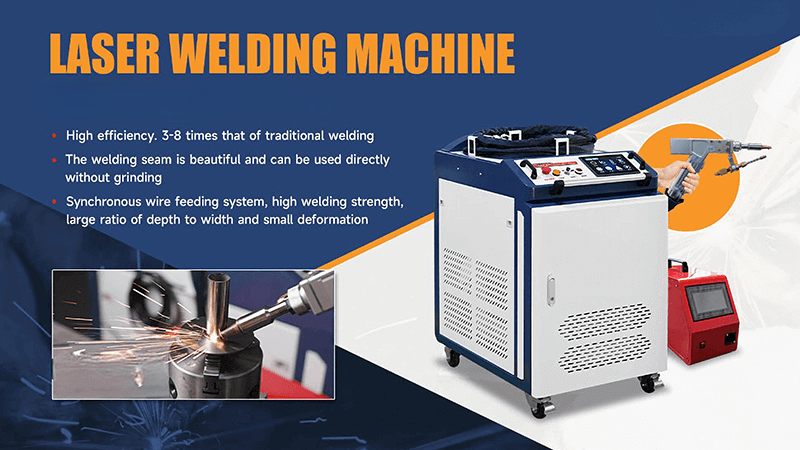
2.Model: KR-5000
Kirin Fiber Welder KR-5000 is another great option, especially for applications that require a high level of customization. It is a platform automatic laser welding machine. Known for its high stability and precision automatically, this model offers excellent beam focus and fast operational speeds.
- Power: 5kW
- Spot Size: 0.15mm
- Cooling System: Water-cooled
- Key Features: High beam intensity, fast welding speed, suitable for a variety of industries

3.Model KR-1500A Fiber Welder
Kirin Laser KR-1500A fiber welder is a popular choice for high-precision welding. It is designed for light to medium-duty applications, particularly in electronics and jewelry making, where the smallest details matter. And it is air-cooling laser welding system, no need to equip water chiller.
- Power: 1.5 kW
- Spot Size: 0.2mm
- Cooling System: Air-cooling system
- Key Features: Lightweight, easy-to-use interface, exceptional spot accuracy
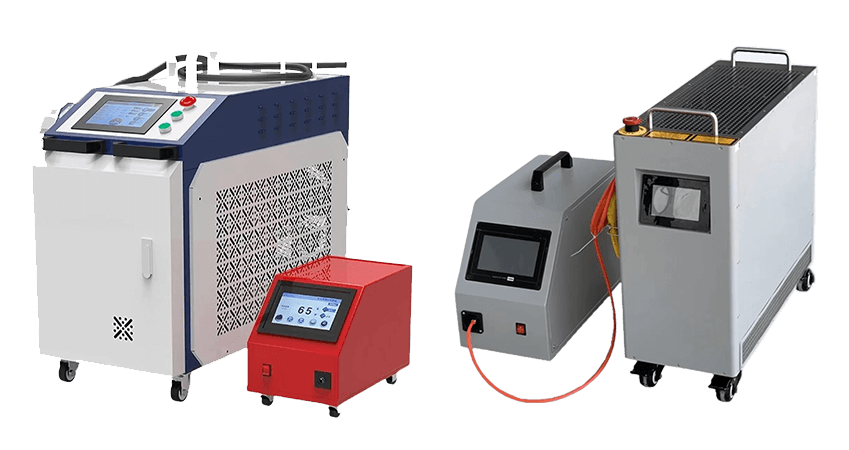
Comparing Top Fiber Welders: A Quick Comparison Guide
Let’s dive into a side-by-side comparison of these models:
| Feature | Kirin Laser KR-3000 | Kirin Laser KR-5000 | Kirin Laser KR-1500 |
|---|---|---|---|
| Power | 3kW | 5kW | 1.5kW |
| Spot Size | 0.1mm | 0.15mm | 0.2mm |
| Cooling System | Water-cooled | Water-cooled | Air-cooled |
| Best for | Metals | Large projects | Electronics, Metal |
| Price | $6,000 | $12,000 | $2,850 |
This comparison should help you choose the one that suits your needs based on power requirements, application type, and budget.
How to Choose the Best Fiber Welder for Your Needs
When you’re on the hunt for a fiber welder, consider the following factors:
-
Application: What materials and thicknesses will you be working with? Some welders are better suited for thicker materials, while others excel at fine details. Here is a guide about how to choose the right laser welding machine according to your actual application.
-
Budget: More powerful welders tend to be more expensive, but they can be more versatile and faster. Consider how often you’ll be using the machine.
-
Support and Service: Choose a brand that offers good technical support, especially if you're investing in high-end equipment.
By understanding these factors, you’ll be able to find the best fiber welder that fits your specific needs.
Applications of High-Precision Fiber Welders
Fiber welders are used in a variety of industries, thanks to their versatility and precision.
-
Aerospace: Lightweight parts require exact welds, and fiber lasers do the job without the risk of distortion.
-
Medical Device Manufacturing: Precision welding is crucial for the safety and effectiveness of medical devices.
-
Electronics: Fiber welders can be used to make small, clean welds on delicate circuit boards.
In these industries, high-precision welding ensures that components work as intended, are safe, and meet the highest standards.
A smaller spot size helps fiber welders achieve greater control over the welding process.True
A smaller spot size focuses the laser beam energy, allowing for more precise control, especially for fine detailing in applications like electronics and medical devices.
Fiber welders use traditional methods of heat generation to melt materials.False
Unlike traditional methods, fiber welders use a focused laser beam to melt and fuse materials with much greater precision and less heat distortion.
Cases of Using Laser Welding Machine
Case Study 1: Automated Laser Welding for Car Body Assembly
Industry Context
In the automotive industry, the assembly of car bodies requires precise welding methods to ensure both safety and structural integrity, while also focusing on minimizing the weight of the vehicle for better fuel efficiency and performance.
Key Characteristics
- Components: Car body panels, chassis, and frames, primarily made from high-strength steel and aluminum.
- Requirements: The welding process needs to be fast, highly accurate, and produce minimal heat-affected zones (HAZ) to avoid warping or distortion.
Solution
Automakers have increasingly turned to automated laser welding systems using fiber laser technology. These systems are particularly favored for their precision and high-speed capabilities. For example, Volkswagen employs laser autogenous welding to assemble side panels in their models like the Tiguan and Magotan.
Key Benefits:
-
Tailored Welding: Fiber laser technology allows for welding different thicknesses of materials without causing distortion. This ability enhances the overall strength of the weld while reducing the weight of the vehicle.
-
Remote Laser Welding: The use of scanning galvanometer heads allows remote welding, a technique that is particularly useful for large, complex assemblies like panoramic sunroofs. This high-precision method ensures that the welds are both strong and durable, while also allowing for intricate geometries that traditional welding methods might struggle to achieve.
The implementation of automated laser welding in the automotive sector results in higher weld quality, faster production speeds, and reduced material usage, making it a cost-effective and reliable choice for manufacturers aiming to meet strict safety and performance standards.
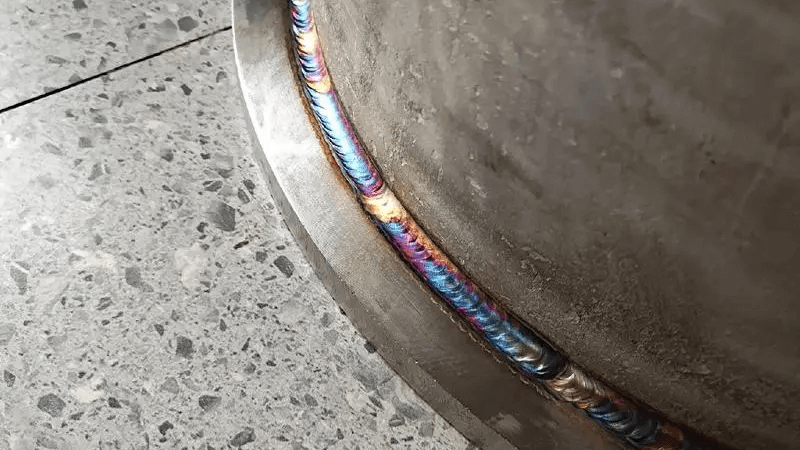
Case Study 2: Aerospace Component Fabrication
Industry Context
The aerospace industry demands the highest level of precision when manufacturing critical components like turbine blades, engine parts, and structural elements. These components must not only withstand extreme operational conditions but also contribute to the overall efficiency and performance of the aircraft.
Key Characteristics
-
Materials: The materials used are typically high-strength alloys, titanium, and lightweight composites, all of which require specialized welding techniques.
-
Requirements: Welds need to endure extreme temperatures, mechanical stresses, and vibration while maintaining the structural integrity of the component.
Solution
Fiber laser welding has become a standard in aerospace component fabrication due to its ability to perform deep penetration welding. The high energy density of fiber lasers makes them ideal for creating strong bonds in high-stress areas, crucial for components like turbine blades and engine parts.
For example, aerospace manufacturers have adopted fiber lasers with a focus diameter of around 100 microns, enabling precise control over the weld pool. This results in clean, high-quality welds that meet the rigorous standards set by the aerospace industry.
Key Benefits:
-
Deep Penetration Welding: Fiber lasers are capable of creating deep, consistent welds that are essential for the reliability of aerospace components.
-
Precision: The fine control over the laser allows for precise weld placement, reducing the risk of defects and ensuring the welds meet strict aerospace specifications.
-
Weight Reduction: As with automotive applications, the precision of fiber laser welding contributes to the reduction of material usage and overall weight of components, which is crucial for improving fuel efficiency and reducing emissions in aircraft.
By adopting fiber laser welding technology, aerospace manufacturers not only improve the durability and performance of their components but also enhance fuel efficiency through lightweight designs, making it a pivotal technology for the industry.
Conclusion
High-precision fiber welders are game-changers for industries that demand accuracy, speed, and reliability. With the right features and capabilities, they offer superior results over traditional welding methods. Choose carefully based on your needs, and don't hesitate to contact us at Kirin Laser for more information or assistance with selecting the perfect fiber welder for your business.
Let’s bring precision to your projects, one weld at a time!
References:
- "A Complete Guide to Set Laser Welding Machine for All Applications.", from Kirin Laser.
- "How to Choose the Best Laser Welding Equipment for Your Needs?", from Kirin Laser.
- "What Factors Affect the Price of Fiber Laser Welding Machines?", from Kirin Laser.
- "How Welding with Laser Technology Enhances Precision and Strength?", from Kirin Laser.
- "How to Find the Best Laser Welding Machine Prices?", from Kirin Laser.
- "Exploring the Applications of 6kW Single-Mode Fiber Laser in Various Welding Fields.", from Hans Laser.


